
Annual Forbs Around Las Vegas, Vegetation Around Las Vegas
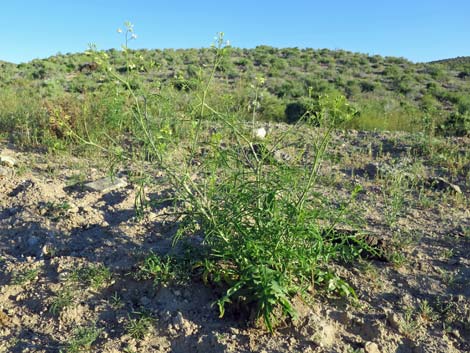 Tall Tumblemustard in typical habitat: disturbed soil on edge of road |
General: Tall Tumblemustard (Sisymbrium altissimum) is an annual forb growing from a basal rosette, developing several flowering stalks, and producing pale yellow, 4-petaled flowers. The basal leaves are long and pinnately lobed or toothed, and the cauline leaves are finely dissected into linear and thread-like segments. The plant dies after it flowers, leaving open, upright stalks that are highly flammable. Tall Tumblemustard is an uncommon component of disturbed desert vegetation communities. Around Las Vegas, look for this species in town and in disturbed roadsides and open fields. This is a fairly recent addition to our local flora. Family: Mustard (Brassicaceae). Other Names: tumblemustard, tumbleweed mustard, Jim Hill mustard, tall mustard, Norta altissima. Plant Form: Basal leaves with several upright, leafy flower stalks. Plants begin as winter rosettes and develop flowering stems in the spring. |
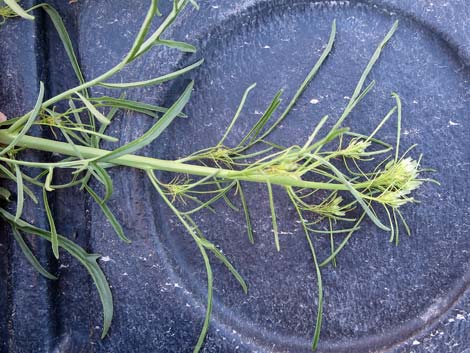 Upper leaves divided into long, linear segments |
Height: To about 4 feet. Stems: Several flowering stalks that originate near the base and branch towards the top. Stems sparsely hairy; without stiff hairs. Leaves: Basal leaves long (to 35 cm) and pinnately lobed or toothed. Cauline leaves are finely dissected into thin segments. Flowers: Blooms during spring and summer. Flowers clustered at the top of the stalks. Sepals 4- to 6-mm long, spreading, tip pointed. Claw (petal stalk) 3-6 mm. Petals 4, pale yellow, 6- to 8-mm long, 2-4 mm wide (fairly large among our weedy mustards). Fruit: Long (5–10 cm), narrow pod (cylindrical), spreading from stem. Pedicels spreading, 6-10(13) mm, as thick as fruit. |
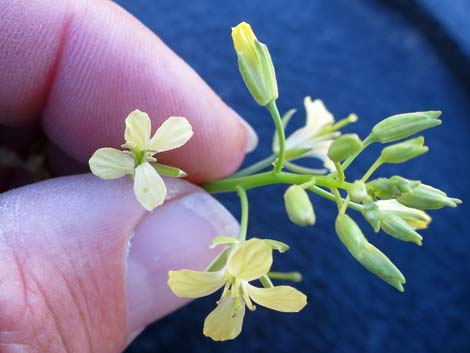 Fairly large, pale yellow, 4-petaled flowers at top of stem |
Seeds: Tiny (1-mm wide), oblong, 80-120 per fruit, one row per chamber, yellow-brown to orange. Habitat: Roadsides, picnic areas, disturbed sites; spreading into undisturbed desert sites. Elevation: To about 7,500 feet. Distribution: Throughout the Americas. Native to Europe. Comments: This species is similar to Black Mustard and Sahara Mustard, but the upper leaves are dissected into linear segments and the flowers are larger. |
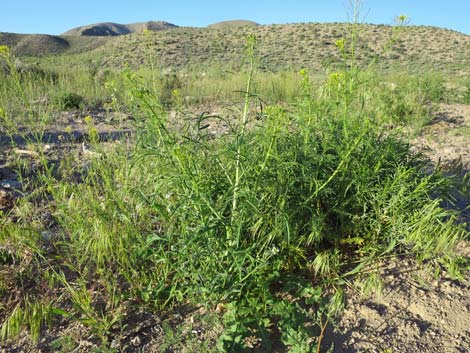 Typical habitat: disturbed soil on edge of road |
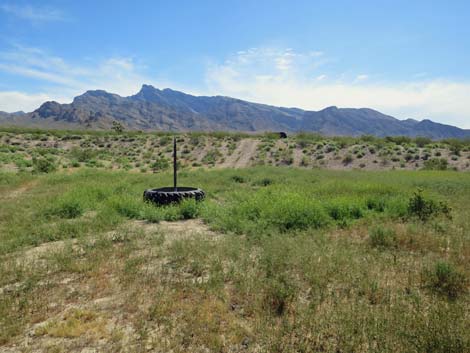 Mixed mustard species in disturbed habitat |
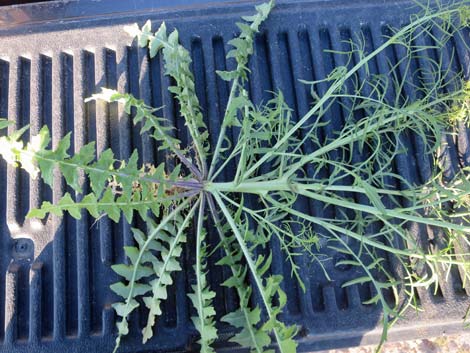 Base of plant showing basal and cauline leaves |
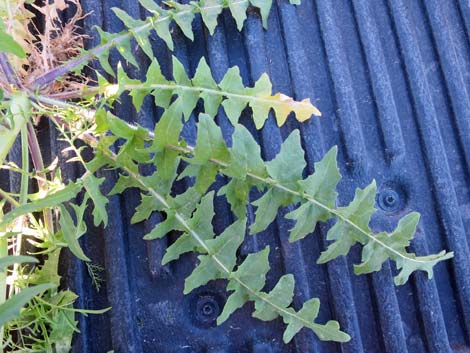 Basal leaves are long and pinnately lobed or toothed |
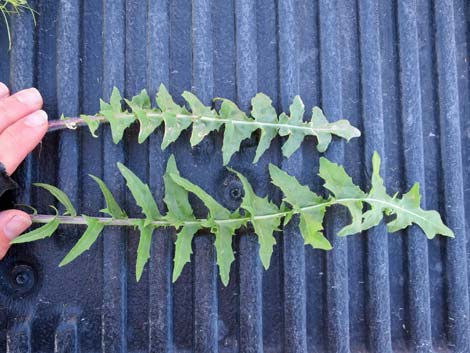 Basal leaves are long and pinnately lobed or toothed (dorsal surface) |
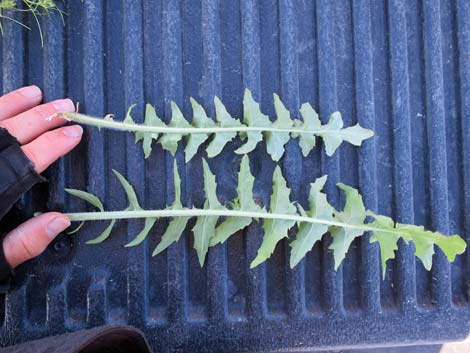 Basal leaves are long and pinnately lobed or toothed (ventral surface) |
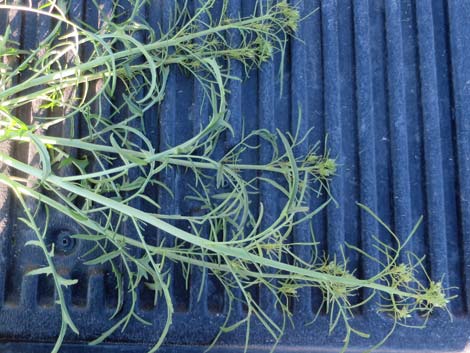 Upper stems with finely dissected cauline leaves |
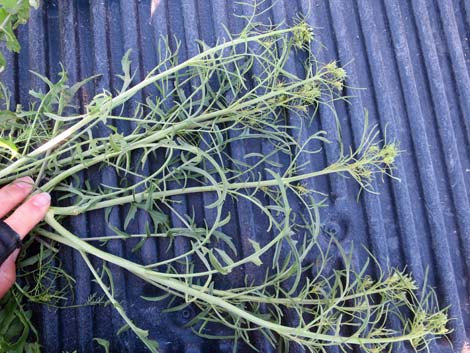 Upper stems with flowers at stem tips |
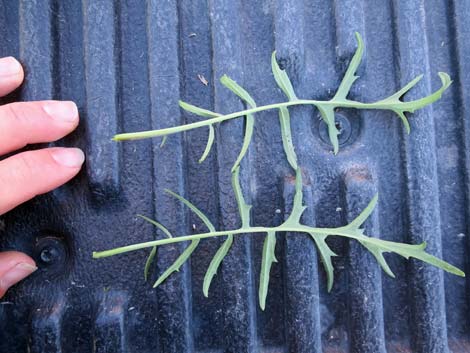 Cauline leaves are finely dissected into thin segments (ventral surface) |
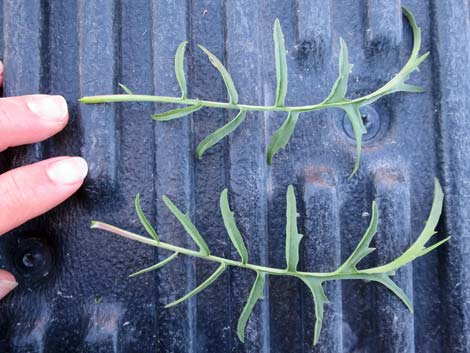 Cauline leaves are finely dissected into thin segments (dorsal surface) |
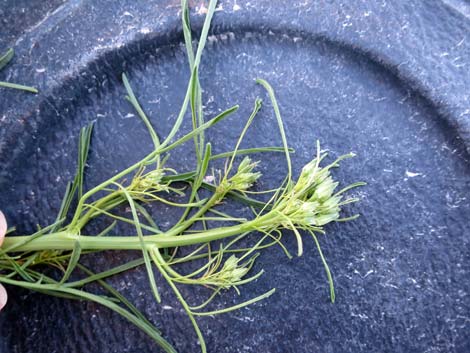 Upper stems with linear leaves and flowers at stem tips |
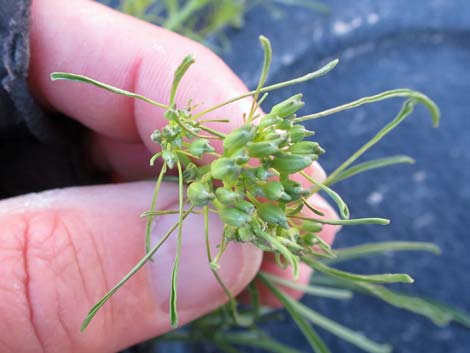 Flower buds |
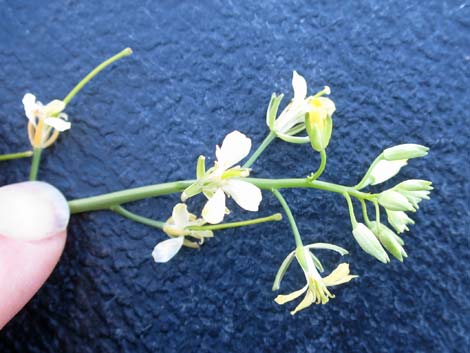 Flowers not tightly clumped at the tip. |
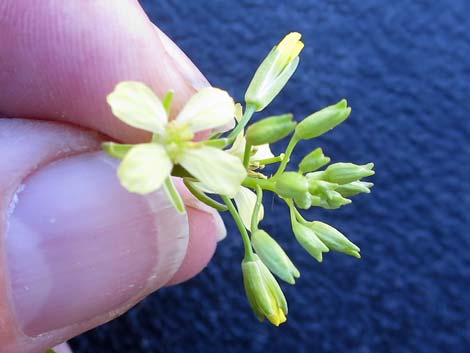 Flower and flower buds |
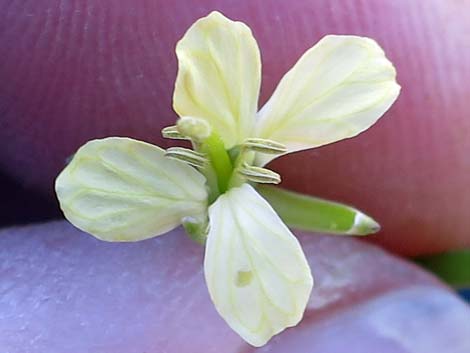 Pale yellow, 4-petaled flower |
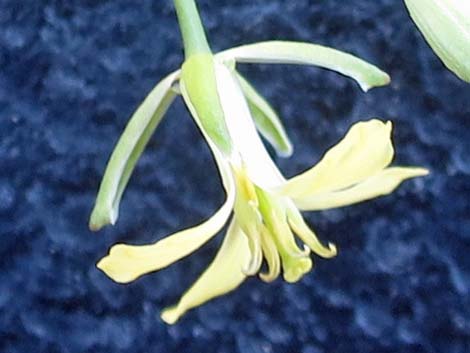 Sepals 4-6 mm long, spreading, tip pointed |
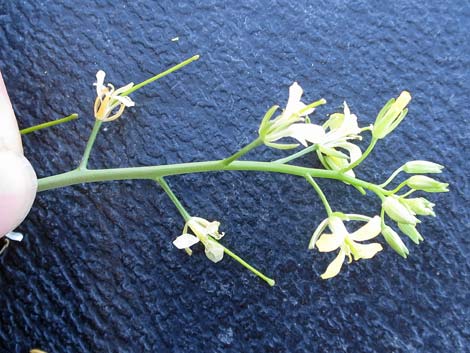 Fresh flowers and developing seed pods |
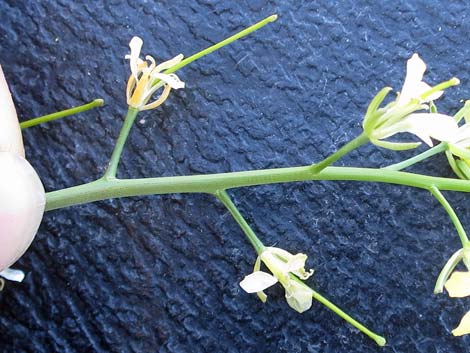 Developing seed pods spread away from stem |
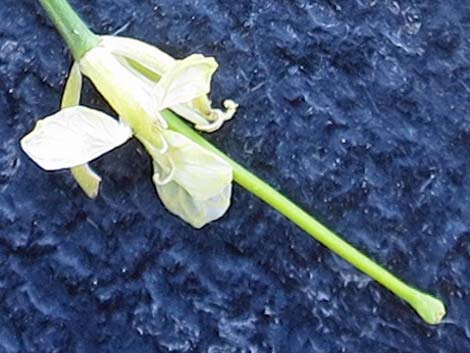 Developing seed pod |
 More to come ... |
Note: All distances, elevations, and other facts are approximate. Names generally follow the USDA database.
![]() ; Last updated 190510
; Last updated 190510
| All Annual Forbs | Plant Species Index | Glossary | Copyright, Conditions, Disclaimer | Home |